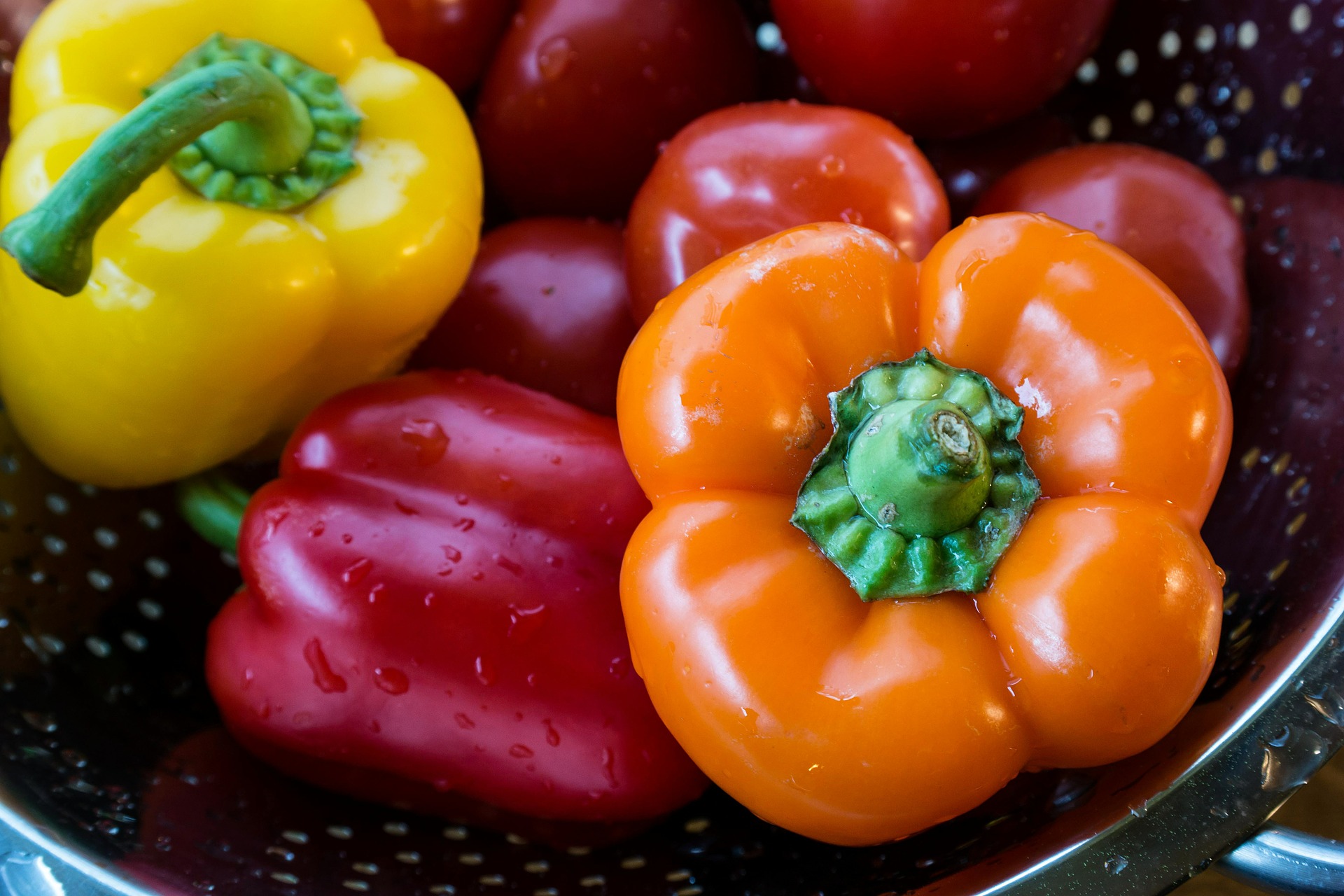
COVID-19 Disclaimer: The information on this page is general in nature for cancer patients and their families. It is not specific to the coronavirus (COVID-19).
According the Centers for Disease Control and Prevention (CDC), “Coronaviruses are generally thought to be spread from person-to-person through respiratory droplets. Currently there is no evidence to support transmission of COVID-19 associated with food.” However, it is always important to follow hand-washing and food safety guidelines.
You’ve likely heard to wash your fruits and vegetables before eating. But what is the correct way to wash your fruits and vegetables? Do you need to buy special equipment or rinses to wash your produce? Are there any additional guidelines for people receiving cancer treatment? Here is what you need to know.
Clean your kitchen surfaces and tools. Make sure your countertops, sink, cutting board, knife, peeler or any other surfaces or tools that may come in contact with your produce are clean and disinfected. Learn more about cleaning by reading Cleaning Tips to Help Keep You and Your Loved Ones Safe.
Get ready. Wash your hands before you wash your produce. Wash hands under warm, running water with soap for 20 seconds. Be thorough, washing your hands front and back, up to your wrists and between your fingers, following Centers for Disease Control and Prevention (CDC) guidelines. Dry hands with clean cloth or disposable towels, or just air dry.
Rinse produce before you peel, cut or cook it. To rinse, hold the fruits or vegetables under running tap water. Rub fruits and vegetables gently under the flow of water to remove excess dirt– this includes foods with skins and rinds that you are not eating. The outside needs to be clean before you peel or cut the produce because germs on the skin can get inside the fruit or vegetable as you cut it. If you have a produce brush, you can use it to scrub firm produce, such as melons; however, this is not required.
There is no need to buy special produce rinses or to soak produce in vinegar or chlorine solutions, unless your doctor gave you specific instructions to do so. Some rinses in fact have additives or allergens that may be irritating for people with sensitive skin. There is no need to buy bottled water for cleaning produce unless your water supply is unsafe such as after a weather emergency. In these situations your state or local health department will make specific recommendations for water usage in your area.
Remove the outer most leaves of vegetables that grow in heads. Remove and throw away external leaves of lettuce, cabbage, kale, or other leafy vegetables. Next, wash each inner leaf individually under running water.
Dry. Allow produce to dry on a clean cloth or paper towel.
Clean cans before opening. Clean lids of canned goods with soap and water before opening. If you use a can opener, remember to clean it afterwards to remove any remaining food or liquid.
Use separate surfaces and utensils. Keep produce separate from raw meat, poultry and seafood. Use a separate cutting boards, knives, plates and utensils for produce and for meat, poultry and seafood. You may find it helpful to designate your tools by color. For example, use a green cutting board and knife for produce and use a red cutting board and knife for meat.
Refrigerate. Put fruits and vegetables in the refrigerator as soon as possible after you cut, peel or slice them if you are not immediately cooking them. Chill them at 40 degrees or colder in a clean, labeled container.
Clean up. Wash cutting boards, dishes, utensils and counter tops with hot, soapy water or another appropriate detergent. You can also run knives, peelers and dishwasher-friendly cutting boards through a dishwasher instead of washing by hand. If you use cloth towels, you should wash them after each use in the hot cycle of your washing machine.
Follow any additional guidelines provided by your healthcare team.
References
- Food Safety During Cancer Treatment
- Centers for Disease Control and Prevention (CDC)—Fruit and Vegetable Safety
- Food and Drug Administration (FDA)—Selecting and Serving Produce Safely & Food Safety for People with Cancer
- How to Wash Produce and Other Food-Safety Tips Amid the Coronavirus Pandemic
